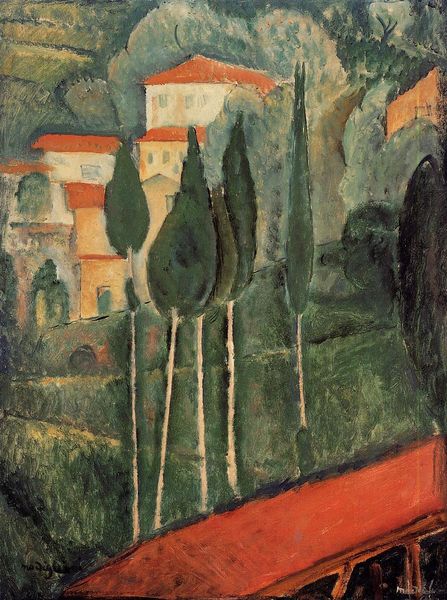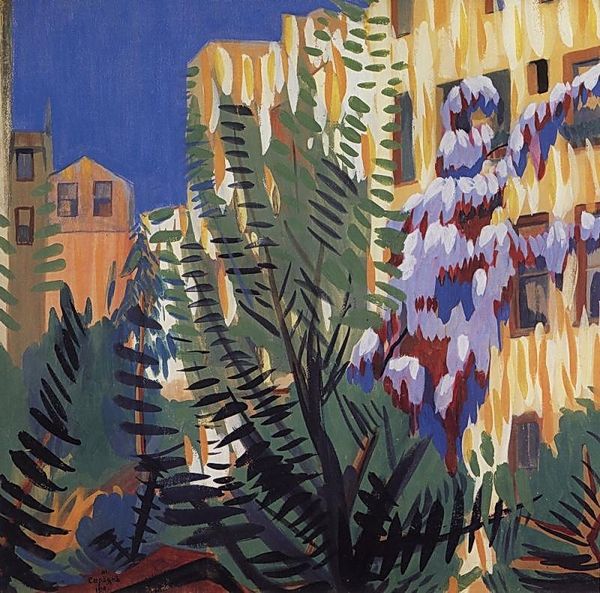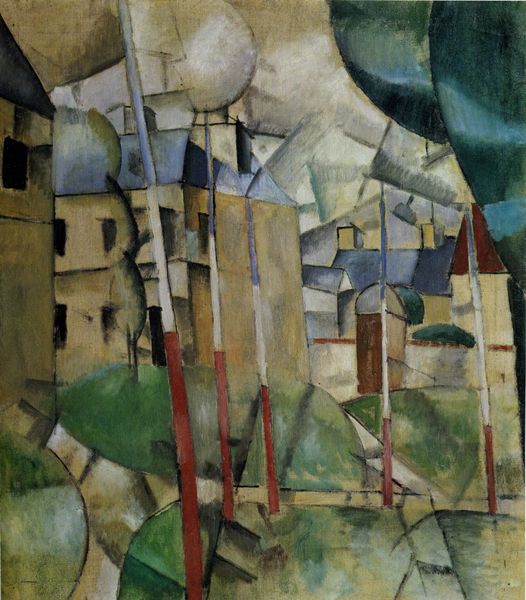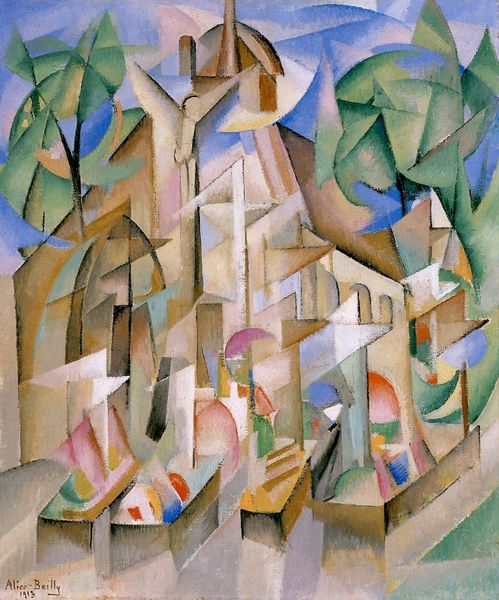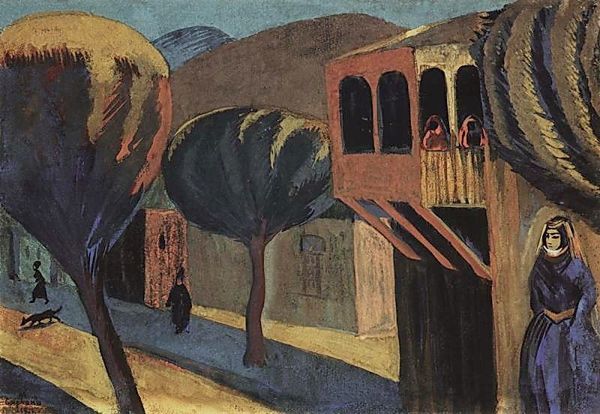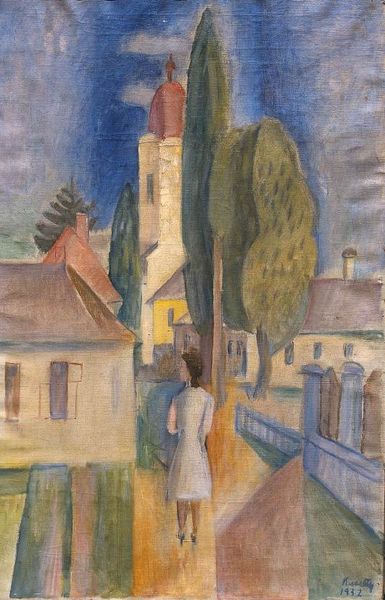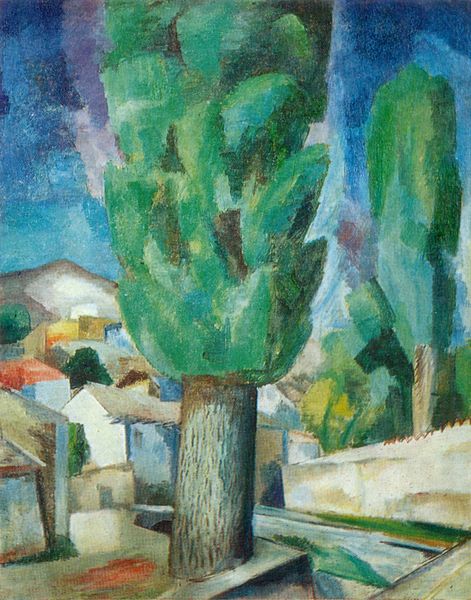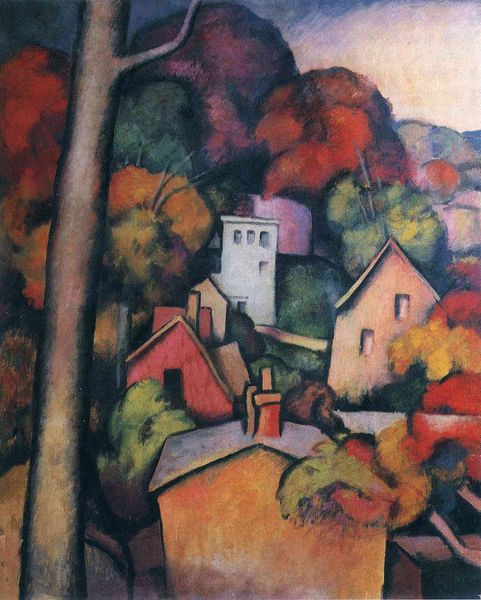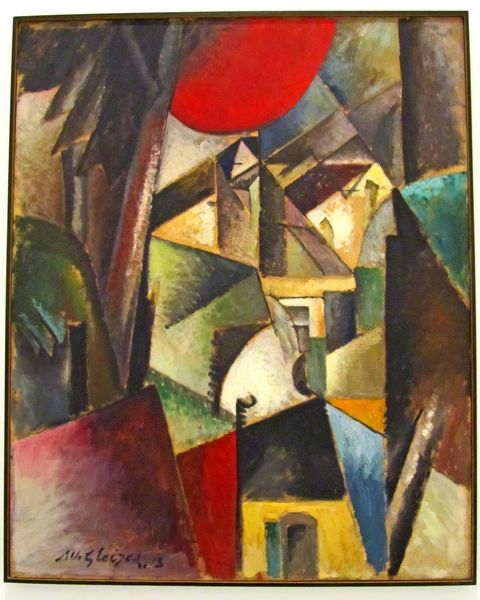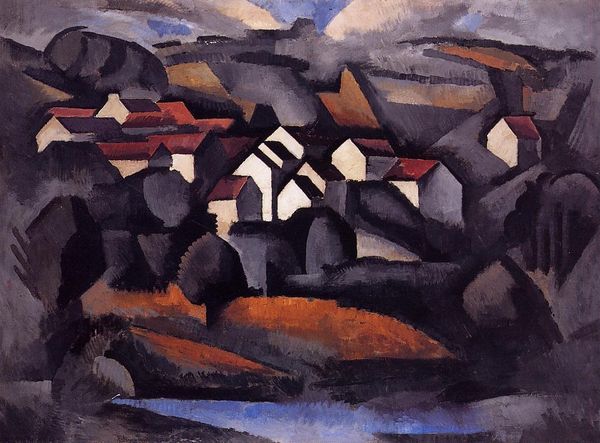
painting, plein-air, oil-paint, impasto
#
painting
#
plein-air
#
oil-paint
#
landscape
#
oil painting
#
impasto
#
painterly
#
cityscape
#
italian-renaissance
Dimensions: 60.3 x 45.1 cm
Copyright: Public domain
Curator: Let’s discuss Amedeo Modigliani’s “Cypress Trees and House,” created circa 1919. Editor: My initial impression is the striking use of yellow—ochre buildings under a muted sky, with those elegant, almost severe, dark cypress trees. There’s something melancholic about it, almost a study in contrasts, I think. Curator: That melancholic atmosphere likely speaks to Modigliani’s biography during that time. Consider that he painted this towards the end of his short life, while battling tuberculosis. The scene might reflect a sense of isolation and perhaps a longing for the warmth and landscapes of his native Italy. The skewed perspective reflects a psychological impact to this scene. Editor: Indeed. The distortion you mention in the architecture certainly lends to that unsettling feeling. Formally, the verticality of the trees against the solidity of the buildings is key, as are the restricted hues that pull it together. There is a sort of formal compression happening too; it looks more like an urban still life. Curator: This cityscape also reflects Modernism's move to urban spaces but maintains a pastoral feel as the artist moves out of the city but remains attached to it. How might that impact contemporary understanding? Editor: The impasto of the oil paint adds a tangible, almost tactile quality to the buildings, grounding the piece even amidst its distortions. Looking closely at the buildings, those ochre-tinted planes establish the solid forms within. I note the structural relationship to each geometric mass that helps determine its overall weight and relationship. Curator: Right, and consider the cultural and art historical forces in Europe between the wars and the overall tension between human advancement, a rising middle class and its traditional art audiences, the move from representational work, and a changing economic market for the arts. What we are seeing here are modern masters grappling with the transition. Editor: So, "Cypress Trees and House," seemingly simple, reveals a depth of emotion and a complexity of composition—a synthesis of formal mastery and poignant personal experience. Curator: Absolutely. This artwork gives us insight into art as more than just formal composition and gives us a view into personal narrative and complex geopolitical contexts.
Comments
No comments
Be the first to comment and join the conversation on the ultimate creative platform.
